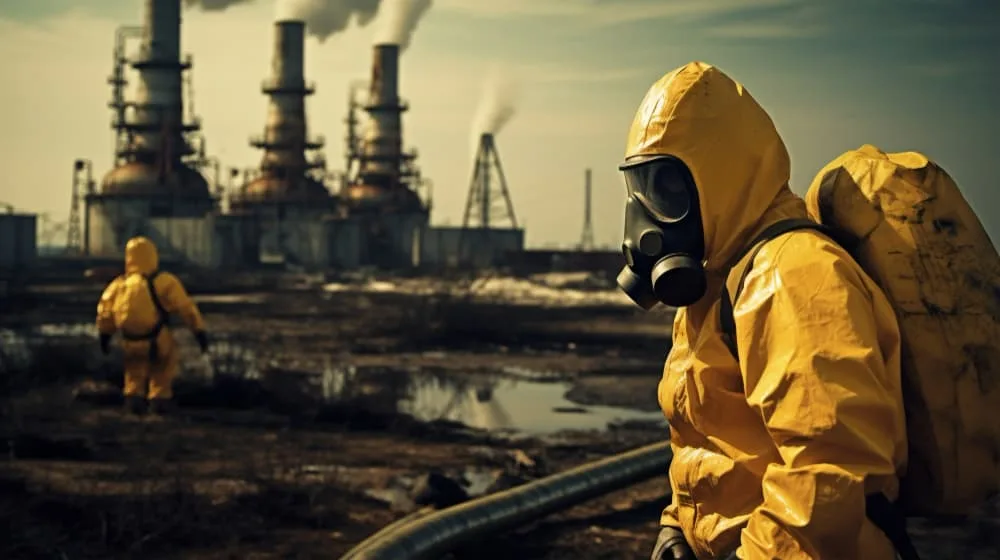Working in the oil and gas industry is a risky and challenging job because it is one of the most hazardous work environments on the planet. Keeping people safe in this industry is no easy feat, but it’s absolutely critical.
They deal with highly flammable materials, extreme pressures and temperatures, hazardous chemicals, cramped confined spaces, and work at dizzying heights – the list of risks goes on and on. One slip-up and they can have a disaster.
But through a multi-layered safety program that covers every angle, smart companies can drastically reduce these risks and give their workers the protection they deserve. Today we will pull back the curtain a bit and experience a glimpse into how the best oil and gas safety programs operate.
Identifying Occupational Safety and Health Risks
Before we get into strategies, let’s quickly go over some of the top dangers oil and gas workers routinely face:
➢ Fires and Explosions – This has to be at the top of the list. Anytime you’re extracting, transporting, and processing substances as flammable as crude oil and natural gas, you have the potential for catastrophic fires or explosions if proper safety measures aren’t followed to the letter.
➢ Hazardous Chemicals – Benzene, hydrogen sulfide, naturally occurring radioactive materials – these are just a few of the nasty substances that can wreak havoc on employees’ health through prolonged exposure. Respirators and protective suits are a must.
➢ Confined Spaces – From storage tanks to vessel entry for maintenance, there are an endless number of confined spaces that bring risks like oxygen deficiency, toxic atmospheres, entrapment, and more. Careful monitoring and safety procedures are critical.
➢ Falls – So much work happens at height, whether it’s on offshore rigs, refinery structures, or anywhere in between. Preventing deadly falls has to be a top priority through training, proper equipment like harnesses, and engineered safety systems.
➢ Ergonomic Issues – The daily grind of repetitive movements, heavy lifting, and awkward positions takes its toll too. We must watch out for musculoskeletal disorders like chronic back pain that can develop over time.
Comprehensive Guide to Managing Occupational Safety and Health Risks
The oil and gas safety profession is not for the faint of heart, but it’s a critical field that makes a real difference in people’s lives. By effectively managing risks through a comprehensive program, we can make this hazardous industry as safe as humanly possible. To properly protect workers, we need a multi-pronged approach that leaves no stone unturned. An effective safety program includes:
➢ Risk Assessments – First, you have to know exactly what hazards you’re dealing with and the likelihood and severity of those risks. Thorough assessments involving safety professionals, employees, and outside experts lay the groundwork.
➢ Engineering Controls – safety circle india wants to control risks right at the source before they ever reach workers. Explosion-proof electrical, machine guarding, better ventilation – these are examples of smart engineering measures.
➢ Policies and Training – You can have the best engineering controls in the world, but they won’t mean much if employees don’t understand protocols and aren’t following safe practices. Ongoing training is critical, as are clear policies and procedures.
➢ Personal Protective Equipment – When we can’t eliminate the hazard itself, PPE is the next line of defense. Proper respirators, protective suits, hard hats, fall protection, etc. have to be selected for each specific risk and consistently used.
➢ Emergency Response – Even with all preventive measures, incidents can still occur. A well-rehearsed emergency action plan that covers fires, spills, injuries, and getting employees to safety quickly is essential.
➢ Incident Reporting – When things do go wrong, companies have to encourage open reporting of all incidents and near misses. Thorough, unbiased investigations can help uncover root causes and create opportunities for improvement.
➢ Contractor Management – The harsh reality is oil and gas operators often bring in contractors for key services that may not live up to the same internal safety standards. Vetting, training, and monitoring third-party workers has to be a priority.
➢ Continuous Evaluation – Safety programs can never become stagnant or complacent. Risks are always evolving, new technology emerges, and lessons are learned from incidents. Always review and update your approach based on the latest information.
Implementing an Effective Occupational Safety and Health Management System
Implementing all the policies, programs and procedures is only half the battle. You also have to foster a culture where safety truly becomes ingrained in the workforce and embraced at all levels of leadership.
Leaders have to walk the walk and demonstrate their commitment through words and actions. Employees need to be empowered to voice concerns. Everyone needs to approach each day with safety as the top priority.
It’s hard, constant work to build and maintain that culture. But it’s essential because a lapse in focus or commitment is all it can take for serious harm to occur in this line of work. Safety should never be an afterthought or a checkbox – it has to be the mindset that permeates everything.
Final Thoughts
There’s no denying the inherent dangers involved in getting oil and gas out of the ground and into people’s homes and vehicles. Companies must take a multi-layered, comprehensive approach to protect their workers and contractors. Engineering controls, rigorous procedures, PPE, emergency planning, ongoing training, and a full-on cultural commitment to safety are all required. It’s not easy, but the risks demand an extraordinary effort. The alternative is to leave your employees vulnerable to life-changing or life-ending incidents that could have been prevented. Safety has to be the top priority – not just in words but in action.

